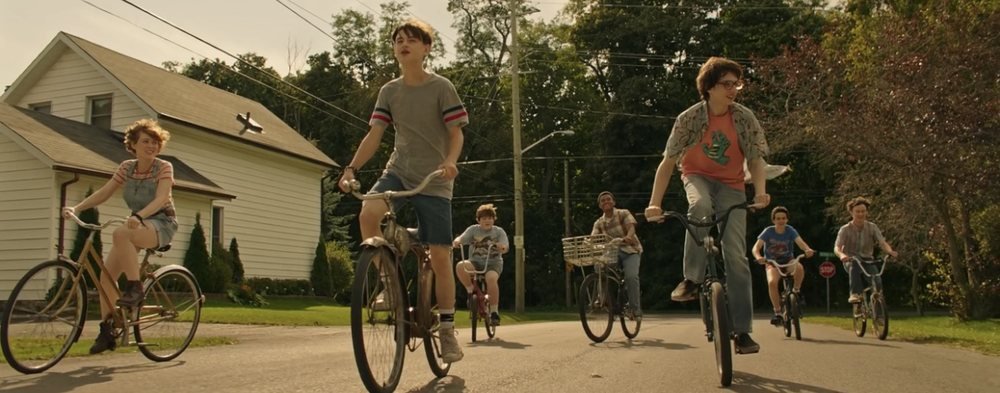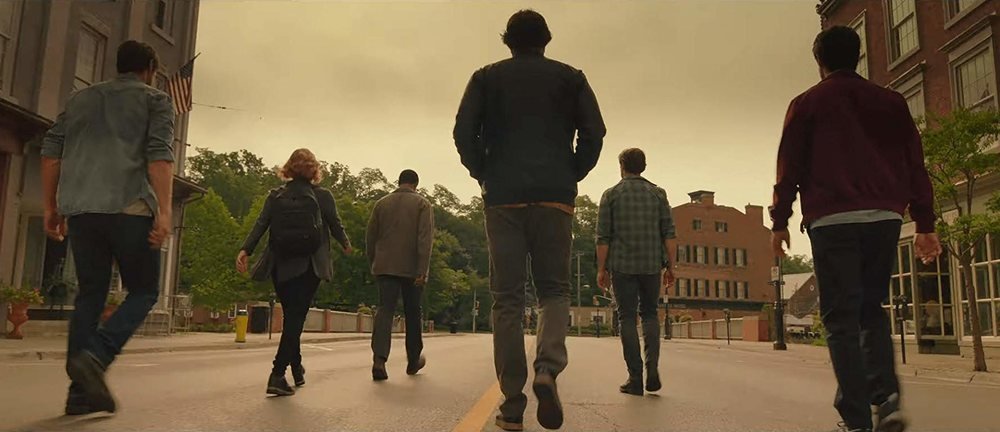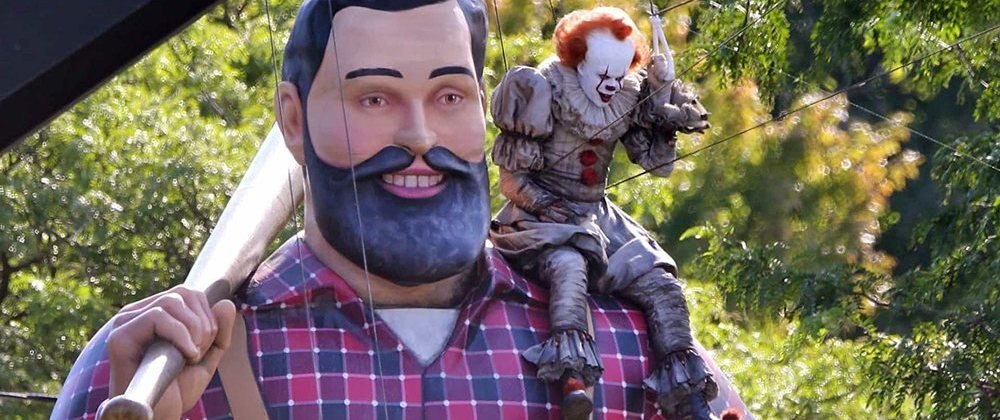IT CHAPTER TWO: Working Harder And Scaring Less
Last year's half-adaptation of Stephen King's It was a gamble on Warner Brothers' part, covering only the childhood era of the novel and hoping the audience would be intrigued enough to return a year later for a second helping. However, the risk was rewarded with a box office gross of over $300 million in the U.S. alone. The sequel has arrived and the filmmakers have rewarded the fans' patience with a nearly three hour monolith of a sequel packed to the gills with shocks, shrieking apparitions and a cameo from King, to boot.
But does the investment and scope make It Chapter Two a good film? The verdictis a split decision at best, with some elements working well, others feelingdrably conventional and a few others that will leave fans of the novelscratching their heads. The resulting film offers garish, showy jump-scares bythe pound but is ultimately less satisfying.

The plot of ItChapter Two focuses primarily on the "adult years" half of thenovel. Mike (Isaiah Mustafa), the only member of the Loser's Club who stayed inthe small town of Derry, sees mysterious deaths piling up and knows it is thework of Pennywise (Bill Skarsgard), the ancient evil who often takes the formof a malevolent clown.
Mike puts out a call to his old friends to remind themof their decades-old promise to return and kill Pennywise if he rose again: authorBill (James McAvoy), comedian Richie (Bill Hader), fashion designer Beverly (JessicaChastain), risk assessment expert Eddie (James Ransone) and architect Ben (JayRyan) all dutifully return. Pastcollides with present as the heroes come to terms with their childhood andPennywise puts them through another elaborate gauntlet of baroque-gothic wakingnightmares.
ItChapter Two puts on an elaborate show of being a horrorfilm. Checco Varese's oft-colorful cinematography pops off the screen, workinghand-in-glove with excellent production design and period detail in thefrequent flashbacks to create an atmosphere of a haunted past. Director AndyMuschietti and screenwriter Gary Dauberman fill up the film's epic length withplenty of drama, visual flash and loud, ostentatious shock setpieces that rollout at least once per reel.

Unfortunately, the bombast ultimately becomes numbingbecause the horrors here are performative in nature instead of coming from aplace of conviction about what is horrifying. This is a problem that that the first film had and that problem deepenshere because its core strategy is to double-down on self-consciously showy and combativetactics that pander to a lowest common denominator vision of how a horror filmis supposed to work.
Muschietti's direction must take the brunt of the blamefor this. He's obviously a fan of the genre and his work is informed by acertain glee in throwing as much spooky stuff as he can at the viewer.Unfortunately, he also favors every hackneyed device known to modern horror cinema:big blasts of music or screaming in Dolby Stereo, jump scares, shakycamerawork, fast cutting. A new wrinklein his trick bag, perhaps added by the script, is a habit of adding goofymoments of humor to the tag of setpieces, like a gruesome knife-fight endingwith an insult about one character's mullet hairstyle or a scene where ahands-on fight with an apparation ends with the monster puking in theprotagonist's face, accompanied by an ironic burst of pop music. Such momentsare as eye-roll-inducing as their descriptions suggest.
The director also tends to repeat himself stylistically:there's a recurring tactic of a shock cut to Pennywise in one of his guises, himshaking his head from side to side and running or scuttling towards his victimwhile roaring. After you've seen this a dozen times, it's more grating thanfrightening. He puts a lot of energyinto working over the audience but that's not the same thing as digging intotheir fears. As a result, the film often feels like a ride through aparticularly obnoxious funhouse at a carnival.

Dauberman's script does its best to make the film'snarrative its own but the results are a mixed bag. There are some effectivebits, like a new coda that makes better use of a particular character than thenovel did and new moment where Pennywise entices a little girl under thebleachers at a sporting event that is more suspenseful/chilling than most ofthe big scares. However, he also adds things that don't help, like the additionof the hackneyed trope of Native American mysticism to explain Pennywise'sorigins. He also makes tweaks to the characterizations that fans of the bookwill find annoying: Mike is portrayed as a sort of bumbling, absent-mindedprofessor type rather than the insightful, grimly dutiful figure from the book.Another character also gets a "major reveal of a secret" bit at theend that rings hollow because the story never sets it up.
In the middle of all this, you have a grown-up cast thatworks hard but never connects the way the younger actors did in the firstfilm. For instance, McAvoy pours plentyof energy into the script's rather emo take on Bill to middling results andChastain gets little to do besides react. The actors who get the broadlycomedic material fare better, with Hader being an obvious star attraction butRansone also doing solid work. Everyone onscreen acquits themselves well butthe script doesn't offer them the emotional richness their child counterpartsget.
In short, ItChapter Two is a muddle where the good parts and bad parts largely cancel eachother out. The film is already a hit at the box office but it will beinteresting how well it ages. The mixture of aggressive shock tactics and acuriously hollow approach to both the story and horror elements doesn't bodewell on that front. Ultimately, the faux-StrangerThings approach of the first film, derivative as it might be, gives it anarrative consistency that makes it the better half of this opus.

To read Schlockmania's review of the first It film from 2017, click here.


